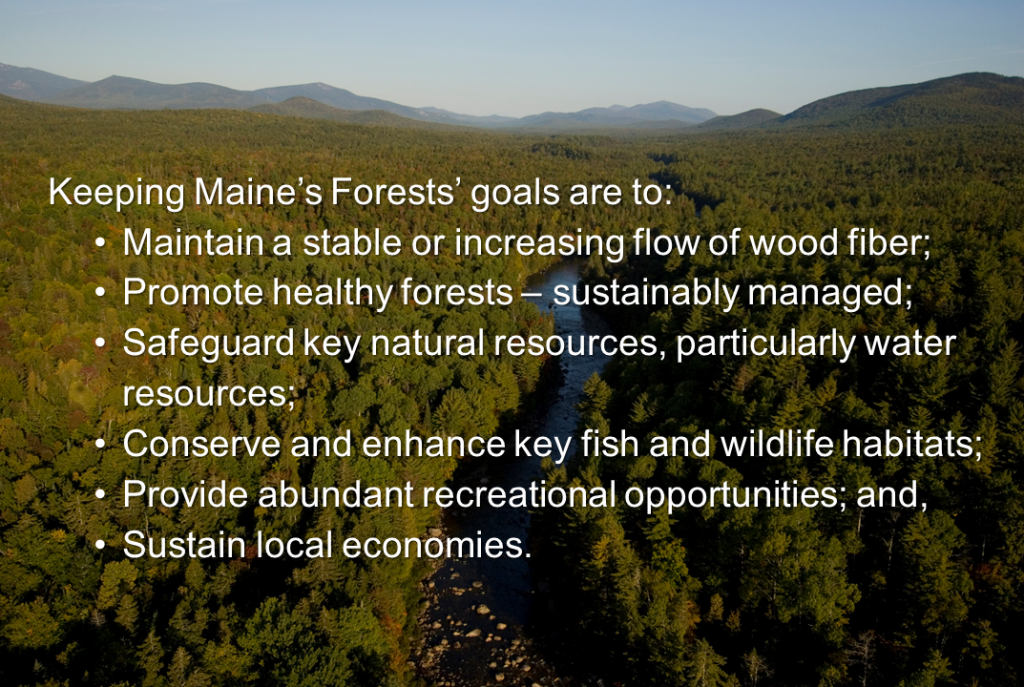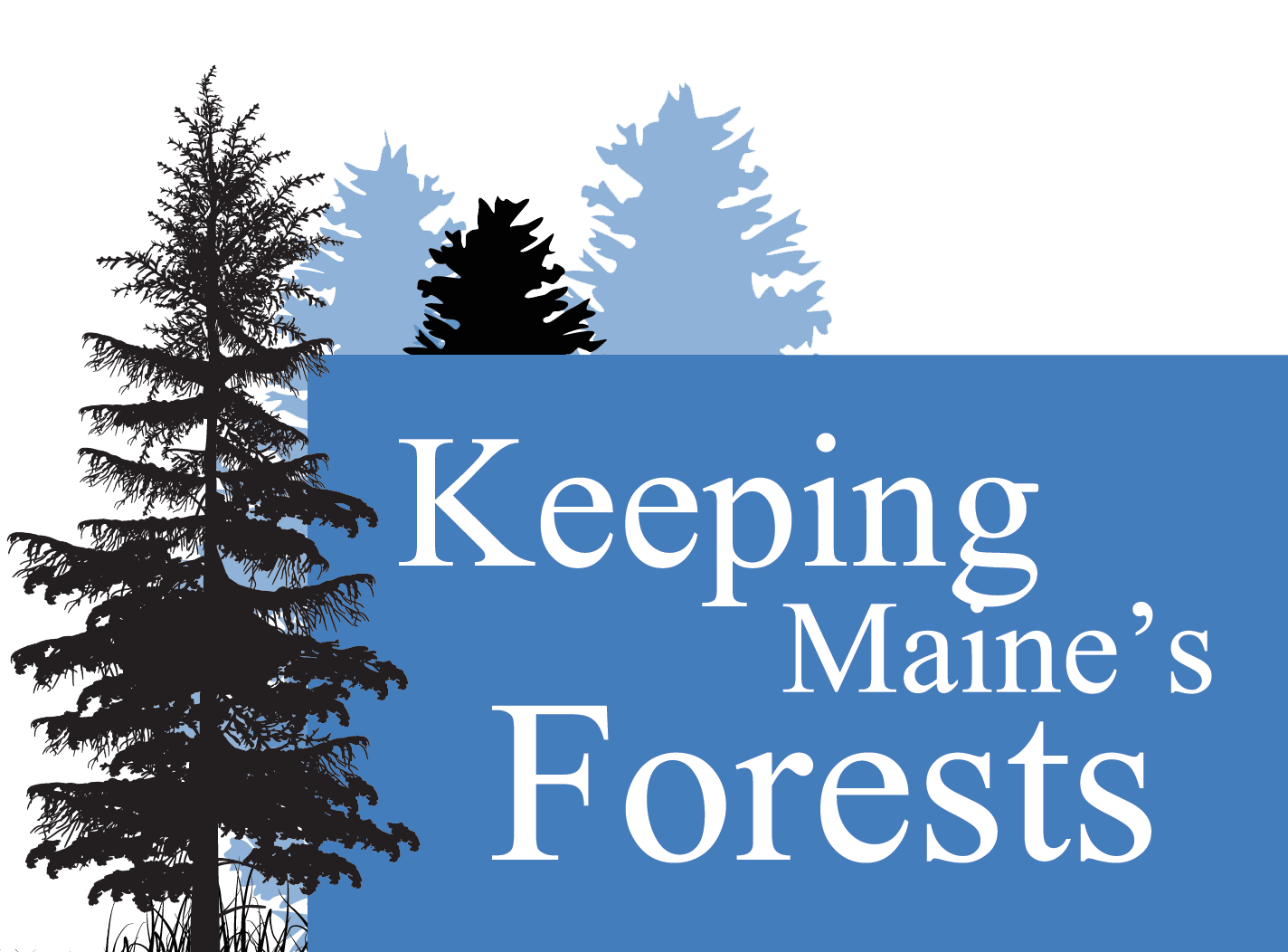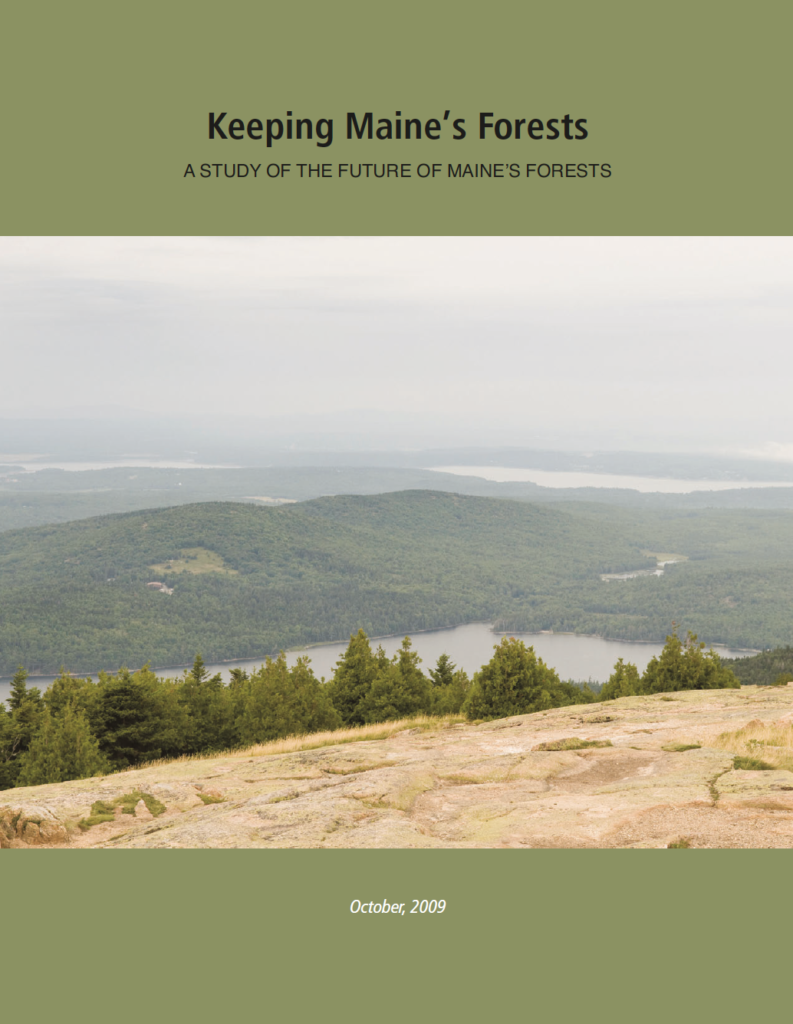
How did Keeping Maine’s Forests originate?
In 2008, Bruce Wiersma, former Dean of the School of Forestry at the University of Maine, was asked by Governor Baldacci to convene a study group to help understand what opportunities existed for broad-based consensus on the future of the Maine Woods. Over 18 months and nearly two dozen expert presentations, that effort produced the report titled: Keeping Maines Forests (Wiersma, 2009)
That report inspired a larger group of forest interests to explore practical steps that could collaboratively secure the many services Maine people derive from the forests, such as jobs, recreation, water quality, and wildlife habitat. The 56 – page KMF Report describes opportunities and hopes for the broadest possible collaboration.
What long-term results can be expected from KMF’s work?
Maine will gain long-term security and stability for its forest landowners, forest products industry workers, sportsmen and women, recreational users, tribal nations, local communities, and wildlife resources. We expect more private and public investments in the North Woods through our collaboration. Maine’s traditional working forests will continue to offer the economic, social, and environmental benefits that the people of Maine value. A closely related initiative produced in 2010 focused on the economic benefits of these new strategies and produced its findings in Keeping Maine’s Forest-Based Economy: A National Demonstration Project.
Why is this different?
Maine needs a fresh approach to fostering collaboration among landowners, environmental organizations, governments, and other interests. In recent years, communications across many sectors have been unproductive. Yet, independently, most of these interests have come to believe that the best way forward should be through open dialogue and constructive engagement, especially around resources as central to our future as the Maine Woods. Keeping Maine’s Forests grew out of a shared belief that a process characterized by inclusion, equity, transparency, respect, creativity, and perseverance can overcome obstacles and open new opportunities. Keeping Maine’s Forests calls for federal and state agencies to work together and more closely with Maine people with a shared goal of maintaining Maine’s forests.
Leadership
Steering Committee
Karin Tilberg, Chair, Forest Society of Maine
Chris Fife, Vice Chair, Weyerhaeuser
Andrew Beahm, Maine Audubon
Mark Berry, The Nature Conservancy
Christopher Meaney, US Fish & Wildlife
Carolann Ouellette, Maine Office of Outdoor Recreation
Patrick Strauch, Maine Forest Products Council
Members
- John Banks, Penobscot Nation
- Keith Bisson, Coastal Enterprises, Inc.
- Benjamin Carlisle, Prentiss & Carlisle Management Company
- James Connolly, Maine Dept. of Inland Fisheries & Wildlife
- Betsy Cook, Trust for Public Land
- Patty Cormier, Maine Forest Service
- Sarah Demers, Land for Maine’s Future Program
- Tom Doak, Maine Woodland Owners
- Dana Doran, Professional Logging Contractors of Maine
- David Montague, Forest Society of Maine
- Tom Duffus, The Conservation Fund
- Alec Giffen, New England Forestry Foundation
- Walter Graff, Appalachian Mountain Club
- Anna Harris, US Fish & Wildlife Service
- Juan Hernandez, USDA Natural Resource Conservation Service
- Robert Howe, Sportsman’s Alliance of Maine
- Eugene Mahar, LandVest
- Spencer Meyer, Highstead Foundation
- Bob Perschel, New England Forestry Foundation
- Rob Riley, Northern Forest Center
- Steve Tatko, Appalachian Mountain Club
- David Trahan, Sportsman’s Alliance of Maine
- Nate Webb, Maine Dept. of Inland Fisheries & Wildlife
- David Wilson, Katahdin Forest Management, LLC
- Mike Wilson, Northern Forest Center

